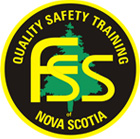Working Alone
Hazards Identified
Not receiving medical or other attention if required. Physical violence from intruder
Hazard-Specific Personal Protective Equipment
None specific to task
Hazard-Specific Training
First Aid/CPR, Orientation to Work Plan for Working Alone
Safe Work Practice
- Whenever an employee must work alone, a work plan which considers the location and potential hazards of the work must be prepared.
- The work plan must be reviewed by the employee, supervisor and any other party who is mentioned in the plan (i.e. call-in location) before work starts.
- The same work plan may be used on future occasions provided any changes are reviewed by the employee, supervisor and any other party mentioned in the plan before work starts.
Then working alone in an office or base:
- The door should be kept locked.
- Only authorized persons should be allowed to enter the building.
- The work plan should include instructions for action in case an intruder enters the building.
- When working alone in a mobile vehicle or in the field:
- The work plan must establish intervals for contacting the base or office during normal operations (i.e. every two hours).
- A means of communications, such as mobile radio, cell phone, or land line phone, must be established.
- The employee must contact the base or office upon entering or leaving the vehicle, and when entering and leaving a “dead area” where the radio or cell phone will not work, and at the normal intervals established by the work plan.
- When an employee has not contacted the base or office as scheduled, the contact person must try to contact the employee.
- When it is not possible to contact the employee, the contact person must ask another base or office to try to contact the employee (to overcome radio or cell phone dead zones).
- When the employee can still be contacted, the supervisor must be notified and a search commenced.
Regulations, Standards and References
Occupational Safety General Regulations
